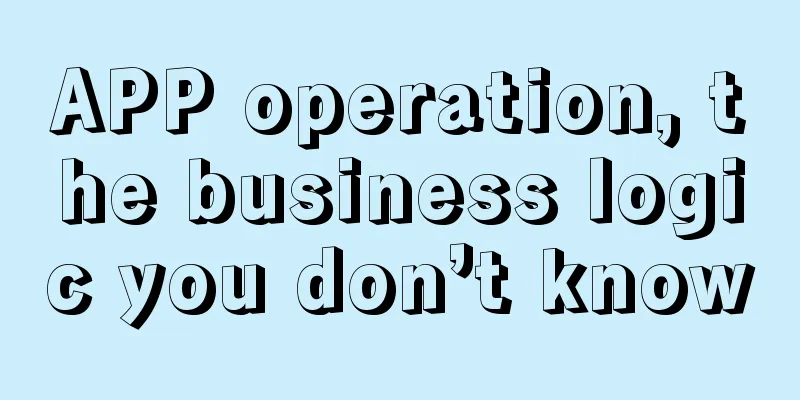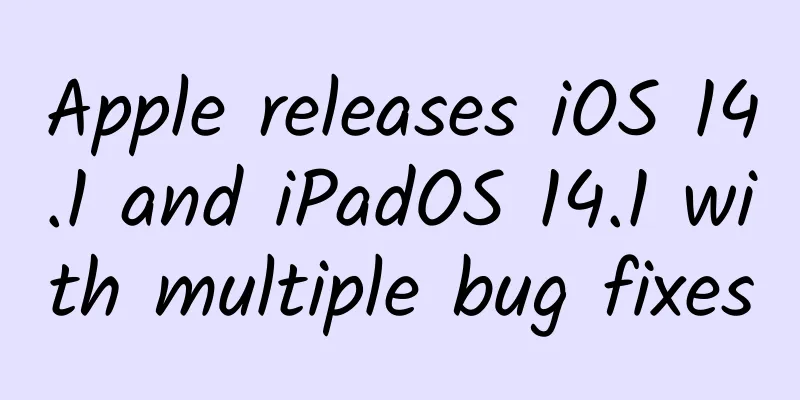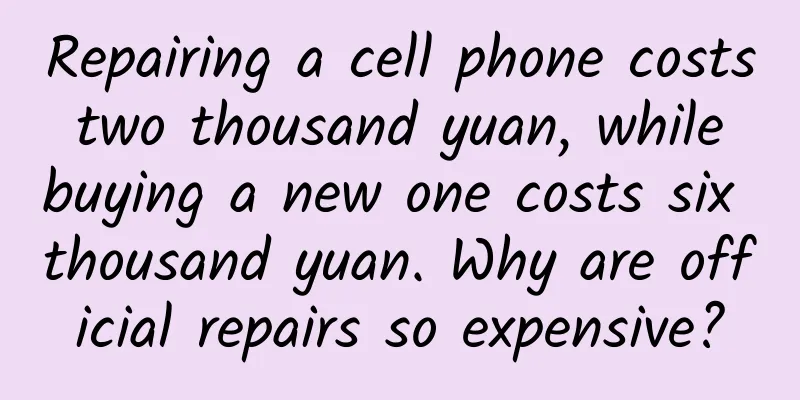APP operation, the business logic you don’t know

|
Although the title is about the business logic of APP products, the following business logic principles are actually very practical for students working in operations and products. Let’s stop talking nonsense and get straight to the point. It mainly includes the following three business logic principles of APP products: Article 1 : Selling certain goods or services directly to users to make a profit The business logic of such products is the most direct. Their purpose is to sell certain goods or services directly to users and make a profit from them. Typical examples are brand e-commerce websites and various O2O door-to-door services. According to this logic, in order to maximize profits, the core capabilities that the operation side needs to have are: (1) The ability to select and expand products and sources of goods (i.e., the ability to find better and more salable products) Article 2. Free + Value-added Services The business logic of this product is: I provide some products or services to users for free, and on this basis make profits through some paid value-added services. The core lies in whether users can become dependent on the product and whether users can be more smoothly persuaded to pay for value-added services. For example: Evernote. According to this logic, the core capabilities that the product needs to have on the operation side are: (1) The ability to acquire free trial users (2) Cultivate user usage habits and dependence (3) Build a path from daily user behavior to payment (4) The final sale of value-added services or third-party payment Article 3: Free + Traffic or Data Monetization Logic 3 is slightly similar to Logic 2. The business logic of this product is: by providing products or services to users, it gradually accumulates massive access traffic or data, and then based on the existing traffic and data, it realizes monetization by introducing third parties who are willing to pay (i.e. selling traffic and data). The main difference between Logic 3 and Logic 2 is that the final payer is not the user, but a third party. A typical example of this type of product is the community The core of this logic often lies in: whether it is possible to acquire enough users, whether user loyalty is sufficient, whether it is possible to accumulate data or content that can continuously bring in new traffic, and whether it is possible to accumulate content, data or a specific atmosphere that payers are willing to pay for. For example: Zhihu Continuing the reverse process, the core capabilities that this type of product requires from the operation side are: (1) The ability to guide users to engage in specific behaviors and create a specific atmosphere (2) The ability to continuously maintain user engagement and form user activity (3) The ability to integrate content, data, and existing key user resources These are what operations should do based on business logic analysis and from which business angles the operations work should be done. Part Two: Elaborate on the relationship between these business logic points and operational indicators, focusing on the incremental and mature stages that exist in most companies. 1. Incremental stage: low CAC and low CLV CAC is the abbreviation of Customer Acquisition Cost, which means "user acquisition cost". Operations related: When a product is in its growth phase, the core operation task is to increase the number of new users and strive to seize the market. 2. Mature stage: CAC is high, CLV is low Operations related: Reduce and optimize CAC and discover new user channels . For example, if there is a certain user base, we can encourage more dissemination. For example, if advertising is expensive, try more long-tail keywords . Users may not necessarily choose good products, but they will definitely not use bad products. Work with PM to polish the product and stand out from the competition. Your users are more expensive and will remain more expensive, focus on retention and stickiness. Don't let your paid money go to waste. Don't waste money on useless things. If you can survive a fight a little longer than your opponent, it is also a victory. Meituan is a good example. Try to operate users accurately and realize user value. More and more Internet companies will not first occupy territory and acquire users and then make money, but will move forward in both directions. This is also a preparation for the next period. Understand the facts, no matter how well you operate, it is still difficult to shake the advantage of high subsidies. The author of this article @APP那些事儿 is compiled and published by (Qinggua Media). Please indicate the author information and source when reprinting! Product promotion services: APP promotion services Advertising |
Recommend
The latest Android app market contacts and event application materials (updated in June 2017)
A complete collection of contact information for ...
In addition to catnip, what other plants do you know that have the word "cat" in their names?
French anthropologist Marcel Mauss once said: &qu...
The distribution map of Chinese surnames has been released. Let’s see where your roots are.
It is estimated that 87% of China's populatio...
Animal ugliness contest, let's see whose "ugly" thing this is...
(Statement: This article is from Knowledge Keer. ...
How much does it cost to be an agent for a decoration mini program in Foshan?
Is it easy to be an agent of Foshan decoration mi...
How to break the offline defeat of new consumer brands?
In the past two years, some consumer brands targe...
Geography of Chinese sesame paste
Loading long image... Source: National Geographic...
Director Xiao’s Wealth Creation Circle 2.0: [Small and Beautiful Wealth Creation Circle], 108 scientific ways to create wealth
Director Xiao’s Wealth Creation Circle 2.0 [Small ...
Where do the little fish that eat feet skin in foot massage shops go when they grow up?
Source: Dr. Curious...
How to build an internet celebrity brand?
Here, I would like to talk further about how to b...
How much does a bull whip cost? How much does bull whip cost per pound in the market?
Many people should know the special effects of bu...
Qingmu·WX group project·earn millions a year (updating) Resource acquisition
Qingmu, the founder of Weiqunhui, has been workin...
“Not Resting Until It Points South”: Tracing the Story of the Invention of the Compass
The picture above is the Sinan model. The picture...
Apple quietly lowered the price of device recycling, but will it have a big impact?
"Apple Trade In Program" is an "ol...
Can the Star Era ET, which starts at 189,800 yuan, stand out from the shadow of the Star Era ES and become more independent?
Do you still remember the Zhijie S7 jointly devel...









